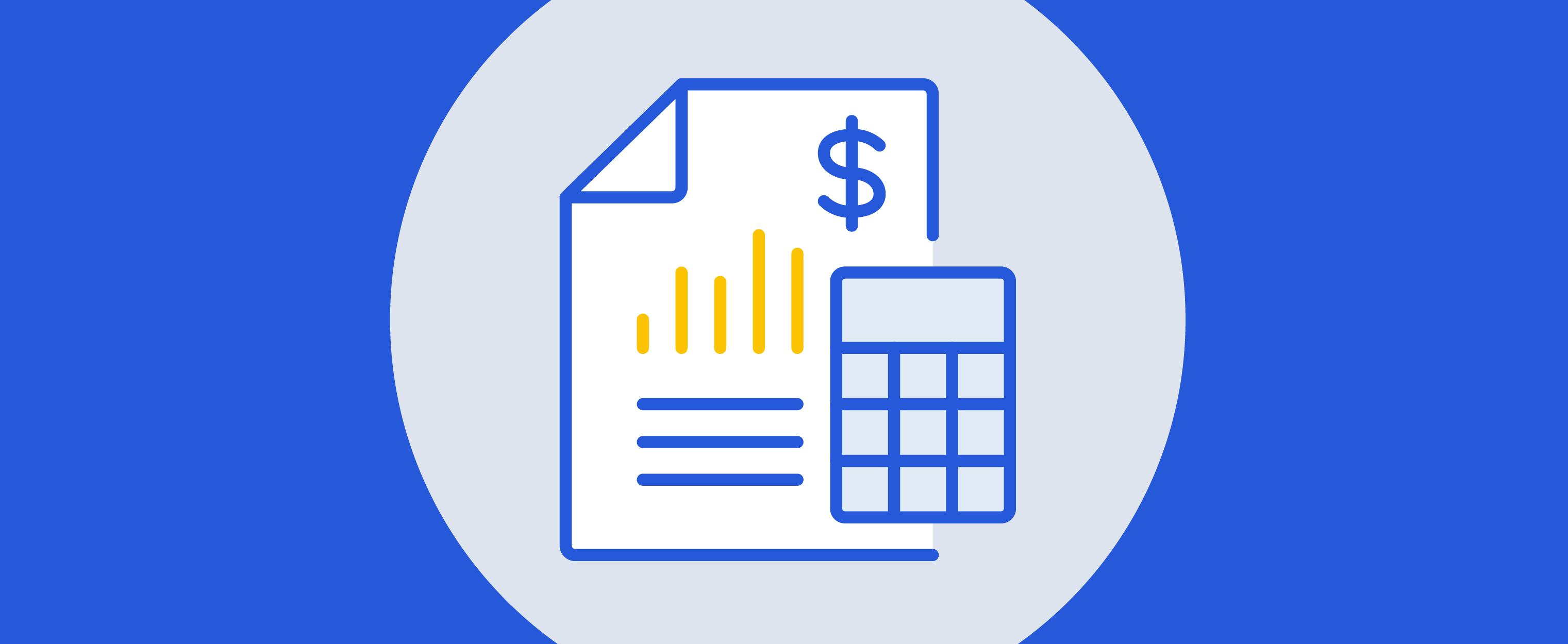How to Make a Budget in 9 Steps

Summary
Learn how to make a budget that fits your needs and lifestyle. Track your spending, cut down expenses and set savings goals with these 9 simple steps.
In this article:
A budget is a plan to help you manage your money. No matter how much money you make or spend, having a budget can make a huge difference. It’s like a roadmap for your money to help you stay on track and work toward your goals — whether that’s paying off debt, saving for a big purchase, putting away money for college and retirement or just feeling more in control of your finances.
Budgeting doesn’t have to be complicated, but it does take some effort to build good financial habits. The good news? Even small changes can lead to big savings. Let’s break down how to make a budget you can stick to — you might be surprised how quickly your progress adds up.
How to create a budget
Budgeting doesn’t have to be a big, complicated task. You can make it as simple as you would like. Whether you prefer to write it down on paper or create a detailed digital spreadsheet, your budget — whether weekly, monthly or annual — should be a helpful tool, not a chore.
Here are some key steps to creating a budget that can help you get started:
Step 1: Determine your income
The first step in creating any budget is to figure out how much money you earn. If you get paid by an employer, you can check your paystub or pay record if you receive a direct deposit to know how much your net income is. Net income is the amount you are left with after taxes and any other deductions are made, like health insurance premiums, deposits into retirement or flexible spending accounts. You can also list any other sources of income, such as alimony or child support.
Even if your income varies from month to month, use your best estimate based on your history. The total amount you take home per month is what you'll use to build a budget.
Step 2: Create a list of your regular monthly expenses
There are certain fixed expenses that you must pay every month. This list will vary for everyone, but regular, or recurring, expenses could include:
- Rent or mortgage
- Internet
- Cell phone service
- Certain types of insurance, like health, auto or life insurance
- Debt from installment loans with fixed monthly payments
Do you also have monthly subscription services like Netflix and Spotify? Those charges can definitely add up. Do your best to account for each of these predictable recurring expenses. If you are budgeting for a family, you may also factor in childcare expenses, like daycare, babysitting and tuition.
Step 3: Plan for your variable monthly expenses
You’ll also likely have some variable monthly expenses, that is, expenses that are different in amount every month. Some common examples are:
- Groceries
- Gas
- Utility bills
- Dining out
- Entertainment
Tracking the expenses over time shows a range (high or low) that you can factor into your budget. Use the higher end of those expenses when you’re planning to make sure you have enough to cover them.
Step 4: Calculate the difference between your income and expenses
Now that you know your net income and your expenses, calculate the difference. This will help you get a sense of how much money is available to save and how much flexible income you’ll have left.
A common misconception is that if you spend close to what you’re earning, you might as well not set aside savings. But the truth is, saving even just $10 a week can add up over time. Create a savings plan for the money you have left over no matter how large or small amount, and you can begin to set money aside for a rainy day.
Step 5: Identify your long- and short-term financial goals
Before you start making your budget, take some time to think about your lifestyle, your goals and your financial situation. Do you want to pay down some debt? Are you saving for a home, a new addition to the family, a car or a big trip? Do you need to build an emergency fund? Do you know how much you should be saving to retire comfortably? The answers to these questions can help form part of the framework for designing your budget. You might want to set up separate savings accounts for long-term goals or keep track of how much money in your savings account is allocated for, say, your upcoming vacation.
Step 6: Create your budget around your priorities
Once you’ve identified your goals, it’s helpful to choose which are most important. Ask yourself, “What’s more important to me right now, paying off debt or starting retirement savings?” If, for example, your main goal is getting out of debt, you should focus your budget on paying those bills first, especially if you’re paying off debt with high interest charges.
Once you start chipping away at these initial priorities, you can expand your budget and your savings plan toward your next set of goals. If you try to plan around too many goals too fast, you might start feeling overwhelmed and abandon your budget altogether. Remember, take it one step at a time.
Step 7: Look for ways to cut your expenses
Finding small ways to cut expenses can make it easier to stick to your budget. Start by choosing one or two spending habits you’d like to adjust. For example, brewing your morning coffee at home or packing lunch a few times a week rather than buying from a cafe or restaurant can lead to noticeable savings over time. The key is balance — there’s no need to cut out all extras at once. Instead, focus on making realistic changes that fit your lifestyle while keeping your savings goals in sight.
There are a lot of fantastic resources that allow you to track your spending digitally. Apps like Mint or You Need a Budget (YNAB) can directly connect to your bank account and show analytics on your spending. If you need extra help finding where to cut back, you can use a service that is free like OneMain Trim to analyze your spending patterns and uncover areas where you could save more, which is free for OneMain customers.
Step 8: Prepare for the unexpected
It’s a fact of life. As hard as we try to make a budget and stick to it, life can throw (expensive) curveballs our way. Just when you think your finances are cruising along, an unexpected expense like a car or home repair happens. Whatever it is, you can create an emergency fund to put aside some money each month and give yourself some wiggle room. This way, you’ll be able to handle these sudden costs without worrying about breaking your budget.
Many choose to create a separate account strictly for emergencies, so it’s out of sight, out of mind. Just be sure you can easily access this money when you need it — unlike a Certificate of Deposit (CD), which typically offers a higher rate of return but locks in your money for a set period, or the stock market, where your money is harder to access and the return isn’t guaranteed.
Step 9: Review your budget consistently
Creating your budget is just the beginning. It’s important to review your budget regularly — whether that’s monthly, semi-annually or annually — so you can see what's working and what's not. By checking in on your spending and comparing it to your goals, you can adjust as needed. Life changes, and so should your budget. Whether it’s because of an unexpected expense or a shift in priorities, reviewing your budget helps you stay on track and continue making progress toward your financial goals.
Create a budget that works for you
Budgeting isn’t a one-size-fits-all process, and what works for one person may not work for another. If you’re managing your finances on your own, you may need to experiment with different strategies until you find the right fit. However, if you share expenses with a partner or family, it’s important to create a budget that reflects everyone’s financial needs and goals. Open discussions about income, expenses, and priorities can help ensure that all household members are on the same page.
Whether you’re budgeting for yourself or as a family, flexibility is key. If one approach doesn’t work, rework and refine your plan until it feels manageable. Once you find a system that works, you’ll feel more in control of your money.
*This article has been updated from 2021. Melina Duffet and Kim Gallagher contributed to this post.
This article is for general education and informational purposes, without any express or implied warranty of any kind, including warranties of accuracy, completeness, or fitness for any purpose and is not intended to be and does not constitute financial, legal, tax, or any other advice. Parties (other than sponsored partners of OneMain Financial (OMF)) referenced in the article are not sponsors of, do not endorse, and are not otherwise affiliated with OMF.


